In our annual Recruiting Metrics Report, we found that one the best sources of high-quality applicants wasn’t job boards – it’s referrals.
This may sound surprising to business owners whose recruiting strategy relies solely on job boards. While job boards are the most common source for applicants across all industries – producing 72% of applications, they do not produce hires at nearly the same rate as other sources.
Applicants who applied directly to a company careers page were four times more likely to be hired than applicants from job boards. But the real winner was referrals: Applicants who applied from referrals were eighteen times more likely to be hired than applicants from job boards.
While referrals are one of the most successful sources of high-quality applicants, they are also often the most underutilized source by busy hiring managers. But as the data shows, it can be worth the time and effort to develop a recruiting strategy that targets referrals. One way to do this is by establishing an effective employee referral program.
What is an employee referral program?
An employee referral program is a structured program in which a company encourages its employees to refer people from their networks to open positions in the company. The referring employee usually receives a reward, such as a bonus payment, if someone they refer is hired. Employee referrals are considered an internal recruitment method.
Hiring through an employee referral program has its advantages:
- Faster hiring process: First, consider the source – is the referring employee someone who demonstrates your company’s core values? If so, their referral is likely to share similar core values and be eager to join your team. You can eliminate a lot of guesswork and deliberation and deliver your offer quicker than you might with a job board applicant who requires more extensive vetting.
- Lower turnover rate: Referred candidates are more likely to be a good fit for the company culture. This means they are likely to be happier at work, get along better with colleagues, and stay at the company longer.
- Better onboarding: Referred employees can be onboarded more easily, since the person referring them may have already provided them with some background on how the company works.
Studies show that employees who were referred by existing employees stay longer at the company than those who were hired from other sources.
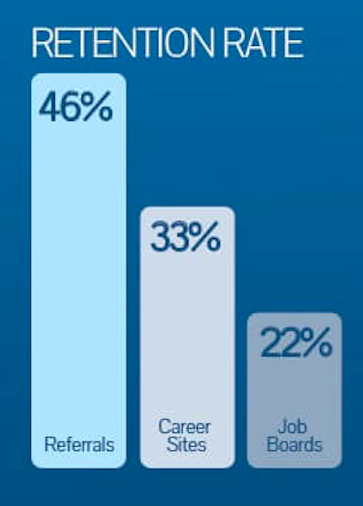
But it’s not just the referred candidates who stay longer. Those who made the referrals also have a longer average tenure at their company.
Creating an effective employee referral program
Now that you understand the benefits, here’s a step-by-step guide for creating an effective employee referral program.
Step 1: Define your vision for your team’s growth.
If your employee referral program is to be effective, you need a plan. And creating a plan begins with a robust understanding of your company, culture, and employees.
Try asking yourself these questions:
- What are your company’s hiring needs right now?
- How do you see your company growing in the long term? Or as Jim Collins would say: Who’s on your bus?
- What are your company’s core values? These should set the tone for your company culture, not the other way around. If you haven’t defined your core values yet, you can start by asking your existing employees how they would describe them.
- What motivates your existing employees? Ask them directly to get more accurate answers.
Be as specific as possible. It’s also likely you’ll have to revisit these questions from time to time as the company grows, culture evolves, and hiring needs change.
Step 2: Set SMART goals.
If you’re going to set up a successful employee referral program, you need to understand why you’re doing so. What are your goals? Write them down and ensure each goal fits the SMART (specific, measurable, attainable, relevant, and time-based) framework:
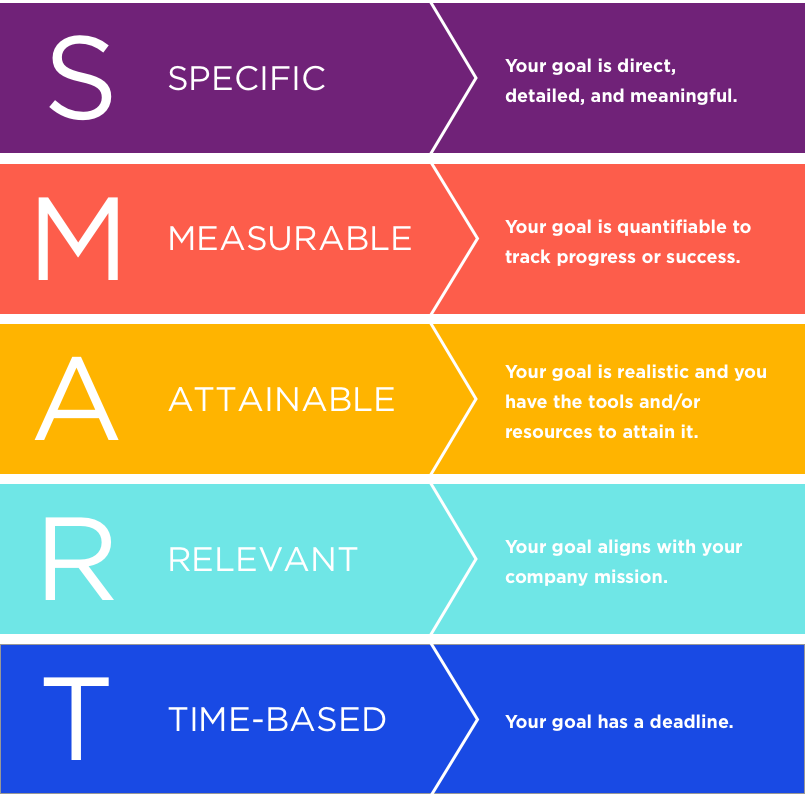
For example, “get more employee referrals” is a bad goal because it is too vague and cannot be easily quantified. An example of a SMART goal might be, “We will solicit five employee referrals for the Director of Finance position by the end of October.” This goal is specific, can be measured, is realistically attainable, aligns with a hiring need, and has a time limit.
Run all your goals through this framework. If they do not meet all the criteria, adjust or refine them until they do.
Step 3: Determine what you need.
What resources do you need in order to attain those SMART goals you’ve just identified? There are three core areas of resourcing you’ll need to look at: time, staff, and budget.
In other words, you need to make sure you’ve got enough people (and the right people), enough time, and enough money to realistically achieve your goals. Here are some ways you can do that and some tools to help you:
- Budget the entire project before you start, using a simple spreadsheet.
- How long will the project take? Ensure you allow enough time and ideally build in a contingency in case something goes wrong. One problem shouldn’t set the whole project back.
- Define who will be responsible for what. Use an employee schedule template to assign specific roles to each team member and ensure things are on track.
Once you know what staff, time, and money you’ll need, ensure the company is willing to give you access to those resources before you launch your employee referral program.
Step 4: Design your program.
Next, you’ll need to determine the program rules. Ideally, keep it as simple as possible. If the program is too complex or difficult to understand, employees simply won’t bother.
Here are the things to consider as you build your program’s framework:
- Who can make a referral: Any employee, only those of a certain seniority level, or only those who have been at the company for a certain length of time?
- Is there a limit to how many referrals an employee can make in a year?
You’ll also need to consider the rewards you offer. According to LinkedIn, 96% of employees prefer a cash bonus for a successful referral:
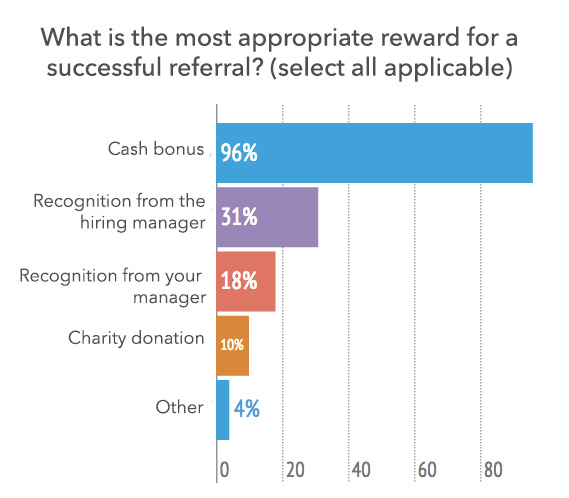
You can conduct a survey of what your employees would like to have as a reward for a successful referral to the company. This may vary across industries. In one recent webinar, Ryan Englin of Core Matters, shared that he’s had great success offering more paid time off as a referral bonus in the home and commercial services industry.
Assuming you go down the cash bonus route, you’ll need to work out how much to offer. A flat rate or a percentage of the role’s salary? According to The Balance Careers, referral bonuses can range from $250 up to $25,000 for executive positions, with the most common figures being in the $1000 – $2500 range.
Step 5: Get your employees excited to submit referrals.
Once you’ve designed your employee referral program, it’s time to promote it. If you want it to be successful, you need to make sure that your employees both know about it and are excited about it.
Announce your new referral program before it is actually launched. Post about it on the company’s (virtual or physical) bulletin board, send around a series of email reminders, or even organize an official launch event.
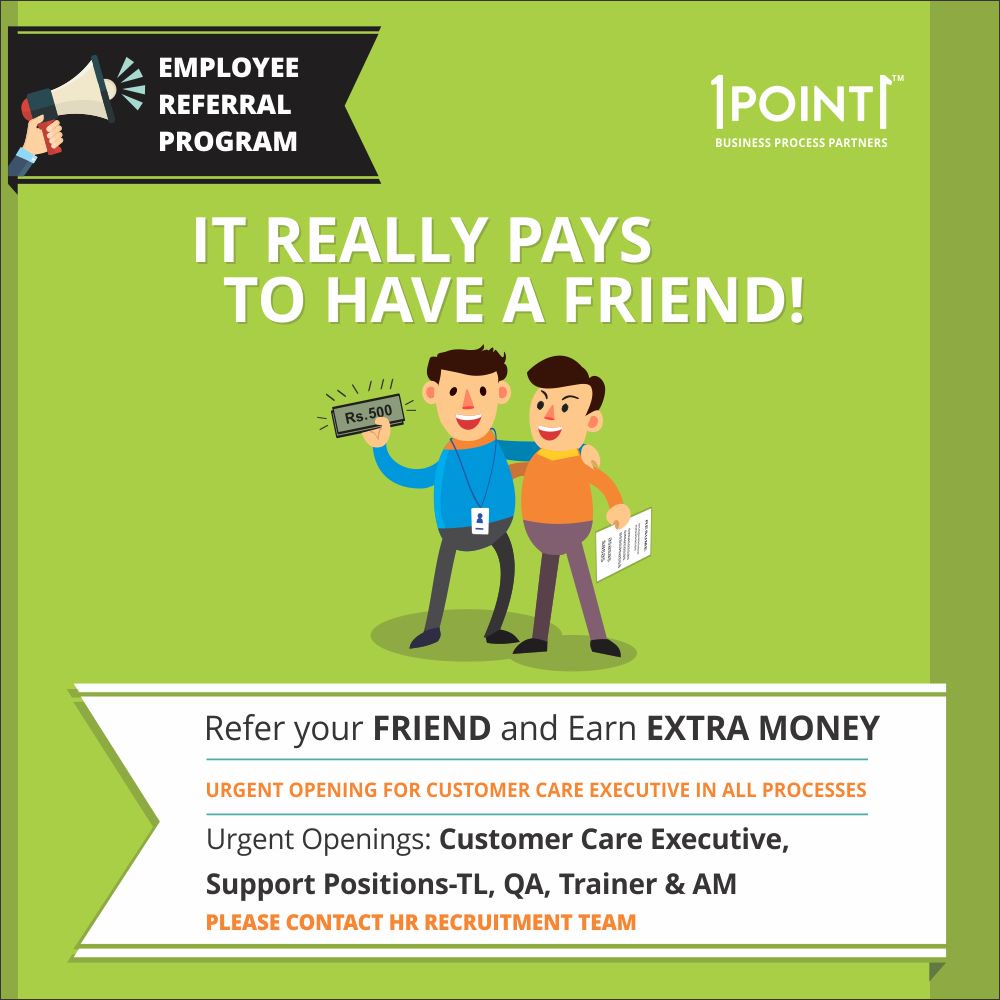
You can also create a special promo campaign for your program. Ask the marketing department to create some branded promotional materials such as the poster pictured above.
You could even introduce a little friendly competition between departments. If several departments have open positions, why not launch your referral program with an inter-team competition to see which team can garner the most referrals in the first week? (But make sure to emphasize that these should be qualified referrals, not just any warm body!)
Finally, ensure your referral program is included in your onboarding materials. If new employees are aware of it as soon as they start, they’re more likely to get involved next time a role opens up.
Step 6: Maintain your referral program long-term.
It’s important to keep your program updated and fresh. A referral program is not necessarily a “set and forget” strategy.
If referrals start dropping off, you can introduce limited time novelties or bonuses to help the program pick back up again. For example, you could promise a company-wide celebratory event when a specified number of successful referral hires are made. You could also run a prize draw for employees, where everyone who makes a qualified referral by a certain date is entered, whether or not their candidate ends up getting hired.
Here’s a great example from Evercare, who introduced a promotion where employees could choose their own reward – a cash bonus, a night away, a fun family day out, or a donation to their favorite charity:
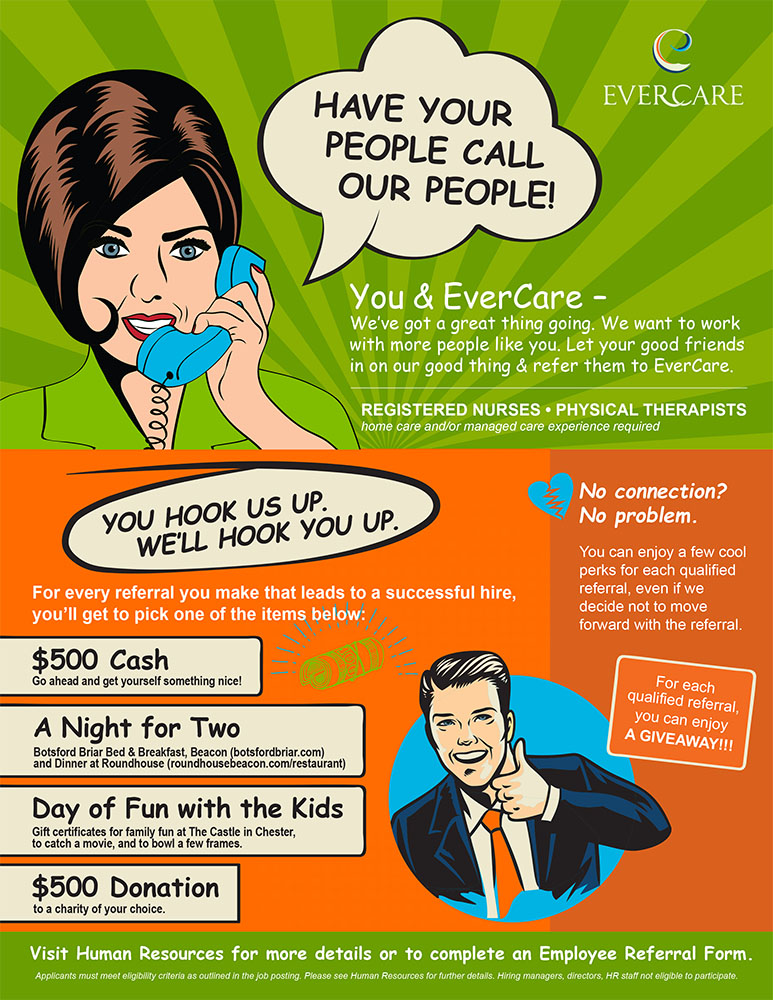
Your goal is to keep employees aware of and invested in the program. Don’t forget to publicly recognize employees who make a successful referral, too. For example, when you introduce the new hire at your first staff meeting after they arrive, you should also name and thank the person who referred them. This will keep awareness of the program front and center in your employees’ minds. It also helps morale, as everyone likes to be recognized and thanked for their achievements.
Step 7: Evaluate the program.
Evaluation is a crucial part of any effective workplace initiative, including your employee referral program. Check in periodically to make sure you’re reaching the goals you specified. Consider these metrics as you evaluate your program:
- Did you meet the SMART goals you laid out in Step 2?
- What is the participation rate in the program across the company?
- What percentage of referrals leads to a successful hire?
- What is the average tenure of a referred employee with your company?
- Has your overall time-to-hire reduced?
- How is employee engagement?
You’ll need to do a mixture of qualitative and quantitative analyses to effectively measure your program’s success. How do your referral hires compare to other hires when you calculate their Talent GPA?
Summary: Effective employee referral programs
Employee referral programs consistently result in the right hires for your business, plus they can improve employee engagement within your existing team.
Make sure your employee referral program is aligned with your company goals and its rewards are enough to incentivize employees to help recruit on your behalf.
Once you have your program in place, you’ll need to keep promoting it and raising awareness of it within your team. You should also continuously evaluate and monitor it to ensure its continued success.

Make Better Hires with CareerPlug
Interested in learning more about how to create a successful recruiting strategy that targets the best applicant sources including employee referrals, careers pages, and custom sources? Receive a personalized demo of our hiring software today.
GET A DEMOAbout the Author
Owen Jones is the Senior Content Marketer at Zoomshift, an online schedule maker app. He is an experienced SaaS marketer, specializing in content marketing, CRO, and FB advertising.
